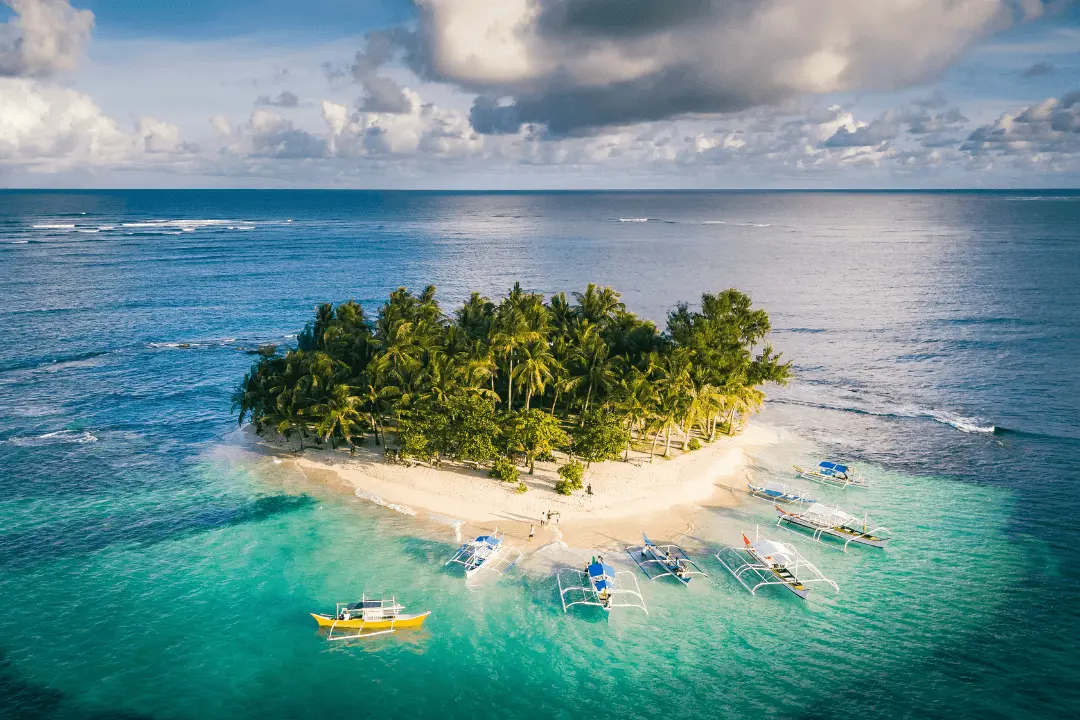The Philippines, an archipelago of over 7,000 islands, is a fascinating travel destination renowned for its immaculate beaches, glistening oceans, verdant surroundings, and extensive cultural and historical heritage. It may be thrilling to explore a nation with such diversity, especially for first-time tourists. Here are 20 must-have suggestions to help you make the most of your vacation to this Southeast Asian paradise, guaranteeing a smooth and unforgettable experience.

1. Best Time to Visit
The Philippines is a destination that is best visited throughout the year, although November through April is said to be the best time to go during the dry season. The rainy season, which lasts from June to October, is characterized by lush scenery and less tourists.
2. Visa Requirements
For visits of up to 30 days, most nations are permitted entry into the Philippines without a visa. It is advisable to confirm the specific visa requirements for your country prior to departure.
3. Local Currency
The Philippine Peso (PHP) is the official currency. Although there are many ATMs, you should always have some cash with you, especially if you’re going somewhere isolated.
4. Stay Connected
Upon arriving, get a local SIM card to stay connected. It’s a reasonably priced method of using mobile data and staying connected.
5. Language
More than 170 dialects are spoken, despite English and Filipino being the official languages. A few simple Filipino words and phrases, such as “Salamat” (Thank you), may make a big difference.
6. Transportation
Because of the size of the Philippines, domestic travel is frequent. Think about using busses, tricycles, or the well-known jeepneys for shorter trips.
7. Cultural Etiquette
Etiquette in Culture: Filipinos are kind and hospitable. It’s usual to welcome the elderly first when you enter their house. The culture has a strong emphasis on showing respect to elders.
8. Dress Appropriately
Wear appropriate clothing, especially when you’re visiting places of worship. On the seaside, beachwear is OK; but, inland, more modest clothing is advised.
9. Safety
Take the same safety measures you would at any place. Steer clear of ostentatious shows of riches and use caution while visiting less-trafficked regions after dark.
10. Health
If you have a sensitive stomach, stay away from street food, drink bottled water, and think about getting the vaccines that are advised for travel to Southeast Asia.
11. Festivals
The Philippines is home to a number of celebrations, including Ati-Atihan and Sinulog. Look for events on the local calendar; going to one can be the highlight of your journey!
12. Tipping
Although not required, it is desirable to leave a small tip (10–15%) in restaurants and for services rendered.
13. Bargaining
In local marketplaces, haggling is a regular occurrence. Always do so with a grin and with grace.
14. Stay Eco-conscious
Remain mindful of the environment: the Philippines is home to fragile ecosystems. Honor the environment, stay away from single-use plastics, and when diving, avoid touching marine life.
15. Delicious Delicacies
Savor regional specialties like lechon, sinigang, and adobo. There’s balut (duck embryo) for the daring!
16. Island Hopping
With hundreds of islands, island hopping is an absolute must. El Nido and Coron are two well-known locations in Palawan.
17. Heritage Sites
Discover the breathtaking Banaue Rice Terraces as well as the ancient cities of Vigan and Intramuros.
18. Adventure Activities
The Philippines provides a wide range of experiences for thrill-seekers, from surfing in Siargao to diving in Tubbataha.
19. Respect Wildlife
Always abide by the rules to protect the animals’ welfare, whether they are tarsiers in Bohol or whale sharks in Oslob.
20. Emergency Numbers
Learn the local emergency numbers by heart. In the Philippines, the universal emergency number is 911.
Whether a visitor wants to explore its rich cultural tapestry, dive into its biodiverse seas, or simply soak in the sun on a remote beach, the Philippines has a variety of activities to suit their needs. Now that you have these 20 must-know pointers, you’re ready to go on an adventure of a lifetime. Savor the Philippines and say “Mabuhay!” to the natives.
Understanding Filipino Hospitality
The people of the Philippines are one of its most captivating features. Filipinos are renowned for their unmatched friendliness. People will smile and really care about your well-being whether you’re in a busy metropolis or a little country. This warmth is a result of the cultural value known as Bayanihan, which stands for supporting one another and community spirit. Travelers encounter this in a variety of ways, from people offering directions to extending dinner invitations. Accept these gestures as an opportunity to gain a thorough understanding of the Filipino way of life.
The Rich Tapestry of Filipino History
The rich historical fabric of the Philippines is affected by several civilizations, mainly Chinese, Malay, Spanish, and American. The more than 300-year Spanish occupation of the Philippines has had a profound impact on Filipino culture. The architecture, celebrations, and even day-to-day activities of the nation all reflect this impact. For example, Intramuros in Manila, with its cobblestone walkways and buildings from the Spanish era, is a monument to this age. On the other hand, American influence is relatively recent and is evident in areas like pop culture and education. Essentially, traveling around the Philippines is like taking a stroll through several layers of fascinating history.
Diverse Ecosystems Await Exploration
Beyond its attraction for culture and history, the Philippines is a hotspot for biodiversity. For those who love the outdoors, the nation is a veritable gold mine, with sites like the subterranean river in Palawan and the Chocolate Hills in Bohol. In addition, it is home to many endemic species and is one of the world’s top hotspots for biodiversity. For eco-tourists, this makes the nation a dream come true. However, such beauty also carries a duty. The Philippines is facing environmental difficulties, therefore tourists are asked to travel sensibly and just leave their footprints behind.
Philippine Festivities: A Feast for the Senses
Celebrating is one thing that Filipinos are skilled at. The calendar of the nation is filled with festivities, each one more colorful than the last. Filipino celebrations are a visual feast, from the vibrant Panagbenga parades in Baguio to the solemnity of the Holy Week processions. They offer a visual and culinary feast as well as an understanding of the many customs and beliefs that make up the nation. Make sure to take part in any local celebrations if your trip falls during one; it’s an unforgettable experience!
Shopping and Souvenirs
Without taking anything from this fascinating country with you, a vacation to the Philippines isn’t complete. Filipino artistry is evident in everything from the exquisite handwoven textiles from the Ifugao area to the exquisitely made wooden souvenirs from Palawan. For individuals who are interested in pearls, some of the greatest South Sea pearls in the world are produced in the Philippines, especially in Palawan. Don’t forget to purchase from reliable vendors to guarantee authenticity.
In conclusion, visiting the Philippines provides the ideal balance of leisure, adventure, cultural immersion, and culinary pleasures. Every village, city, and island has a tale to tell. You’re ready to add your own remarkable chapter to the extensive story of the archipelago with these pointers and insights. Travel safely, and savor every second spent in the heart of Asia!






